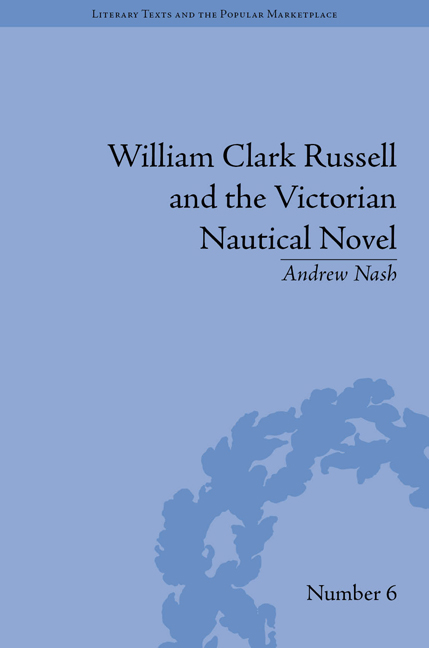Book contents
- Frontmatter
- CONTENTS
- Preface and Acknowledgements
- List of Figures and Tables
- Introduction
- 1 Sailor and Writer
- 2 Writing as a Woman
- 3 Finding the Sea
- 4 Writing the Sea: Genre and Theme
- 5 Writing the Sea: Women and Gender
- 6 Marketing the Sea: Serials
- 7 Marketing the Sea: Books and Publishers
- William Clark Russell: A Bibliography
- Notes
- Works Cited
- Index
4 - Writing the Sea: Genre and Theme
- Frontmatter
- CONTENTS
- Preface and Acknowledgements
- List of Figures and Tables
- Introduction
- 1 Sailor and Writer
- 2 Writing as a Woman
- 3 Finding the Sea
- 4 Writing the Sea: Genre and Theme
- 5 Writing the Sea: Women and Gender
- 6 Marketing the Sea: Serials
- 7 Marketing the Sea: Books and Publishers
- William Clark Russell: A Bibliography
- Notes
- Works Cited
- Index
Summary
One of the difficulties in writing about genre fiction is that exactly what constitutes a particular category is always a matter of debate. As John Frow argues, genre theory lacks ‘an agreed and coherent terminology’. Different theorists posit different meanings for terms like genre, mode and kind. In Frow's own terminology, a nautical novel would be considered a ‘sub-genre’ of the wider genre of the novel, defined by its ‘particular thematic content’. In turn this subgenre would carry a mode which in Russell's case might be considered romance. Such a classification cannot be restrictive, however, because individual novels can mix modes, incorporating, for example, the tragic, the comic or the fantastic. Furthermore, with a sea story it is not only thematic content that is at stake. Unlike detective fiction, for example, the setting of the story is a distinguishing characteristic. As Frow argues, genre is, ‘amongst other things, a matter of discrimination and taxonomy’. In literature the taxonomy arises through a reciprocal exchange between different forces including authors, publishers, booksellers, readers and critics. This exchange ensures that definitions and understandings of genres are always fluid. Texts can be shaped by, or perceived to belong to, different genres, but they also transform them. This essential point underpins my reading of the genre of Russell's work.
- Type
- Chapter
- Information
- William Clark Russell and the Victorian Nautical NovelGender, Genre and the Marketplace, pp. 81 - 108Publisher: Pickering & ChattoFirst published in: 2014



